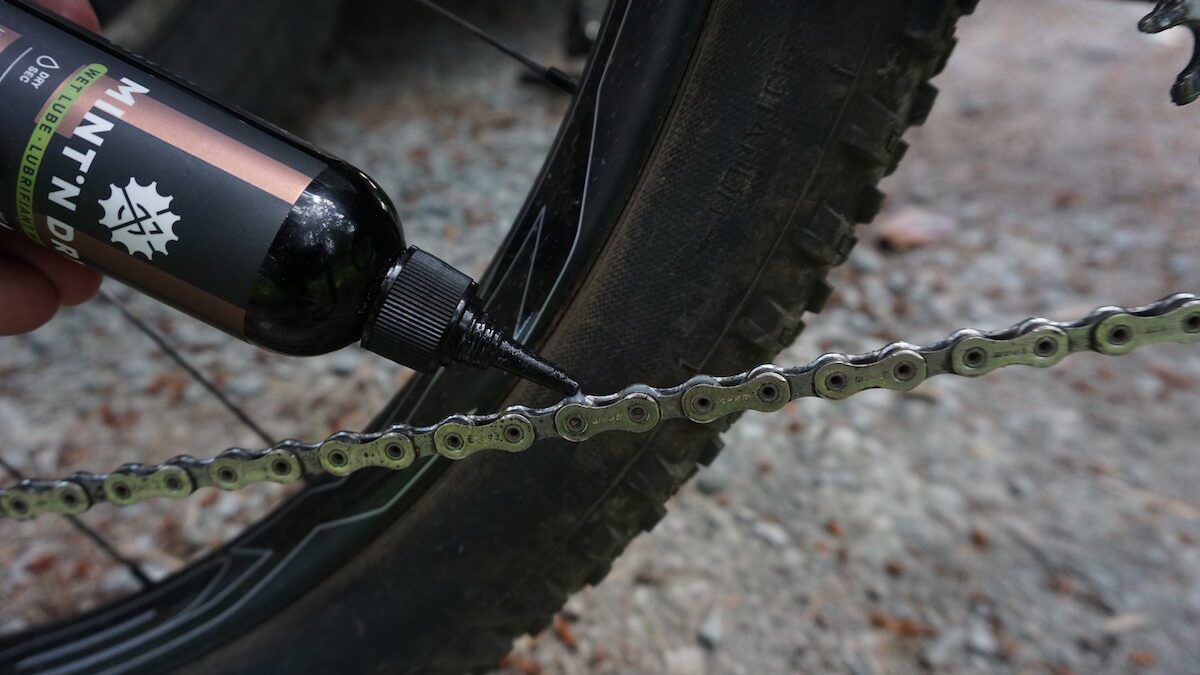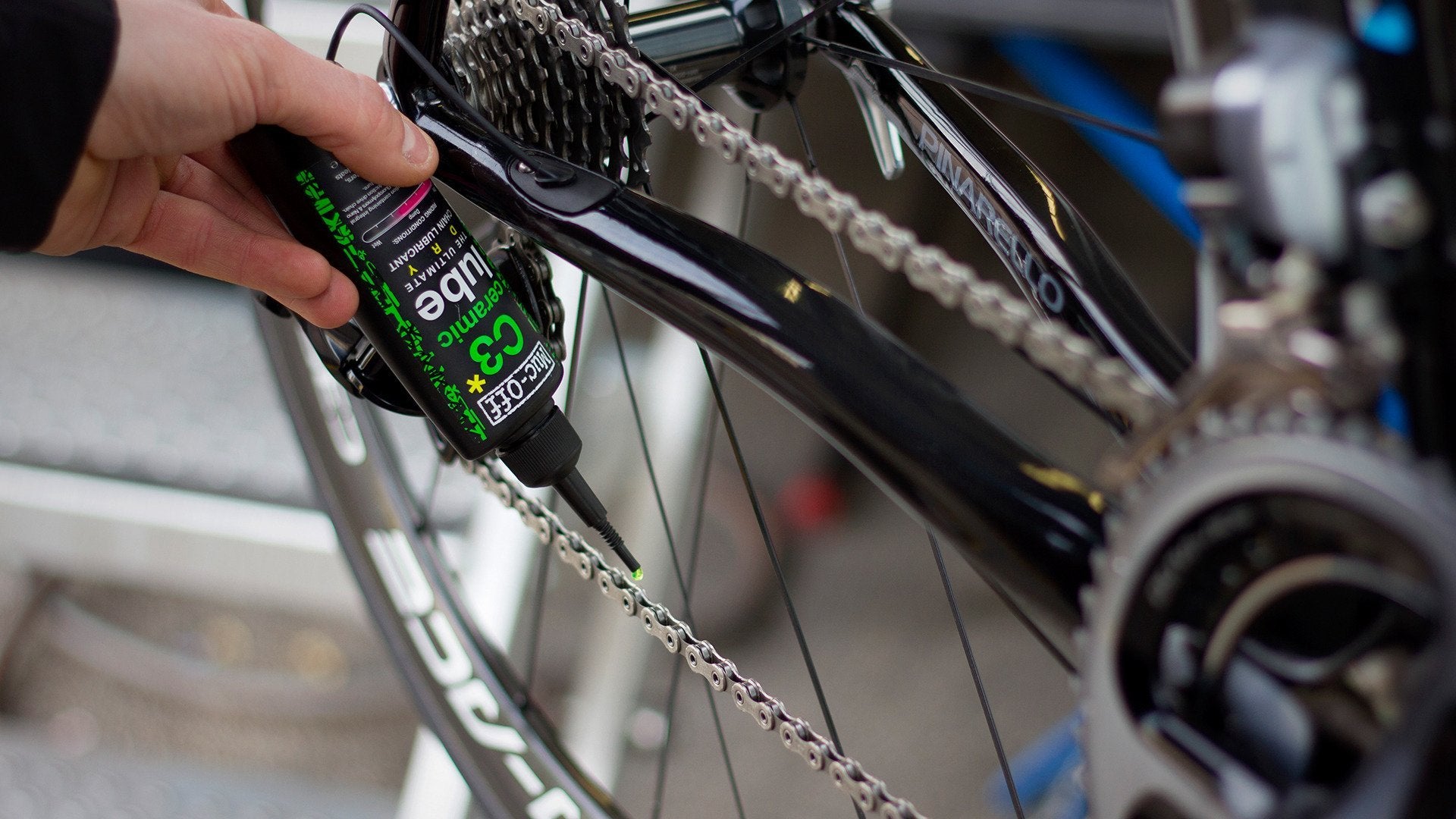Regular maintenance of your bike chain is essential for optimal performance and longevity. Lubricating your bike chain reduces friction, prevents rust, and ensures smooth shifting. Consequently, knowing how to lube a bike chain is a crucial skill for every cyclist. Therefore, this comprehensive guide explores the steps involved in lubing a bike chain, from preparation to the application process and post-lubrication care. By understanding these techniques, you can effectively maintain your bike chain and enhance your riding experience.
Preparing to Lube Your Bike Chain
Proper preparation is vital to ensure that the lubrication process is effective. Understanding these preparatory steps helps you achieve the best results. Therefore, exploring how to prepare to lube your bike chain is essential.

Gathering Necessary Supplies
Before you start, gather all the necessary supplies. You will need a quality bike chain lubricant, such as wet lube or dry lube, a degreaser, a brush or a chain cleaning tool, and a clean cloth. Wet lube is ideal for wet and muddy conditions, while dry lube works better in dry and dusty environments. Choosing the right lube for your riding conditions ensures optimal performance. By understanding the importance of appropriate supplies, you can be well-prepared for the task. Therefore, recognizing the value of quality materials is crucial.
Cleaning the Chain
Cleaning the bike chain before lubrication is critical to remove old lube, dirt, and grime. Use a degreaser and a brush or chain cleaning tool to scrub the chain thoroughly. You can also use a chain cleaning device that clamps onto the chain and makes the cleaning process more efficient. Rinse the chain with water and dry it completely with a clean cloth. By understanding the significance of a clean chain, you can ensure the new lube adheres properly and performs effectively. Therefore, recognizing the importance of thorough cleaning is essential.
Applying Lubricant to the Bike Chain
The application of lubricant to the bike chain involves several steps to ensure even coverage and optimal performance. Understanding these steps helps in achieving a well-lubricated chain. Therefore, exploring the process of applying lubricant is essential.
Positioning the Bike
Positioning the bike correctly makes the lubrication process easier and more effective. Place the bike on a bike stand or lean it against a stable surface, ensuring the rear wheel can spin freely. This allows you to rotate the pedals and access the entire length of the chain smoothly. By understanding the importance of proper positioning, you can facilitate the lubrication process. Therefore, recognizing the value of a stable setup is crucial.
Applying the Lubricant
To apply the lubricant, start by placing the nozzle of the lube bottle at the top of the chain, near the lower part of the drivetrain. Slowly rotate the pedals backward with your other hand, allowing the chain to move through the drivetrain. Apply a steady stream of lube to the chain, ensuring it penetrates each link and roller. It’s essential to cover the entire length of the chain evenly. By understanding how to apply lubricant correctly, you can ensure comprehensive coverage and optimal protection. Therefore, recognizing the importance of even application is crucial.
Wiping Off Excess Lubricant
After applying the lubricant, it’s essential to wipe off any excess to prevent it from attracting dirt and grime. Use a clean cloth to gently wipe the chain, removing extra lube from the outer surfaces while ensuring enough remains inside the links and rollers. Excessive lubricant can cause a buildup that affects performance and increases wear. By understanding the importance of removing excess lube, you can maintain a clean and efficient chain. Therefore, recognizing the value of moderation is crucial.

Post-Lubrication Care
After the lubrication process, taking additional steps ensures the longevity and performance of your bike chain. Understanding post-lubrication care helps maintain optimal chain condition. Therefore, exploring post-lubrication care is essential.
Inspecting the Chain and Drivetrain
After lubricating the chain, take a moment to inspect the rest of the drivetrain, including the cassette, chainrings, and jockey wheels. Look for any signs of wear, damage, or excessive dirt buildup. Regular inspection helps identify potential issues early and ensures smooth operation. Address any problems promptly to maintain overall drivetrain health. By understanding the significance of post-lubrication inspection, you can prevent unexpected failures and extend component life. Therefore, recognizing the importance of regular checks is crucial.
Storing the Bike Properly
Proper storage of your bike helps maintain the chain and overall condition of the bike. Store your bike in a clean, dry place, away from extreme temperatures and moisture. Using a bike cover or a dedicated storage area protects it from dust and debris. If storing the bike for an extended period, consider reapplying a thin layer of lubricant to the chain to provide extra protection against rust and corrosion. By understanding the importance of proper storage, you can ensure your bike remains in optimal condition. Therefore, recognizing the value of suitable storage practices is essential.
Frequency of Lubrication
Determining the appropriate frequency of chain lubrication depends on various factors, including riding conditions and usage intensity. Understanding these factors helps maintain optimal chain performance. Therefore, exploring the frequency of lubrication is essential.

Riding Conditions
Riding conditions significantly influence the frequency of chain lubrication. In wet, muddy, or dusty environments, chains are more prone to dirt buildup and require more frequent lubrication. In contrast, dry and clean conditions might allow for less frequent lubrication, but regular checks are still necessary. Adjust your maintenance schedule based on the specific riding conditions to ensure optimal performance. By understanding how riding conditions affect lubrication needs, you can tailor your maintenance routine accordingly. Therefore, recognizing the importance of adaptability is crucial.
Usage Intensity
The intensity and frequency of your rides also affect how often you should lubricate the chain. Frequent and intense riding, such as long-distance cycling or mountain biking, requires more regular maintenance. Conversely, occasional or casual rides may not necessitate as frequent lubrication. Monitor your chain’s condition and listen for any noise or roughness during rides, which indicates it may need lubrication. By understanding the impact of usage intensity, you can develop an effective maintenance schedule. Therefore, recognizing the value of attentive maintenance is essential.
Addressing Common Questions About Lubing Bike Chains
Understanding common questions about lubing bike chains provides additional clarity and ensures effective maintenance. Knowledge of these answers ensures better preparation. Therefore, exploring common questions is essential.
What Type of Lubricant Should I Use?
A common question is what type of lubricant to use for a bike chain. Wet lubricants are ideal for wet and muddy conditions, offering long-lasting protection. Dry lubricants, on the other hand, are better suited for dry and dusty environments, as they don’t attract dirt as easily. Ceramic lubricants provide advanced protection and performance, although they can be more expensive. By understanding the different types of lubricants, you can choose one that best suits your riding conditions. Therefore, recognizing the importance of the right lubricant is crucial.
How Can I Tell If My Chain Needs Lubrication?
Another common question is how to determine if a bike chain needs lubrication. Indicators include squeaking noises, rough shifting, visible rust, and dry or stiff links. Regularly inspecting the chain and monitoring its performance during rides helps identify when it needs lubrication. By understanding these signs, you can maintain your chain effectively and prevent issues. Therefore, recognizing the importance of timely lubrication is essential.

Addressing Common Misconceptions About Bike Chain Lubrication
Addressing common misconceptions about bike chain lubrication provides accurate information and dispels unwarranted concerns. Clearing up misunderstandings ensures an informed perspective. Therefore, exploring common misconceptions is important.
Misconception: More Lubricant Is Always Better
A common misconception is that more lubricant is always better for the chain. In reality, excessive lubrication can attract dirt and grime, causing more harm than good. The key is to apply an even layer of lubricant and wipe off the excess. By understanding the importance of moderation, you can maintain your chain effectively. Therefore, dispelling this misconception highlights the importance of balanced lubrication.
Misconception: Any Lubricant Will Work
Another misconception is that any lubricant can be used on a bike chain. While general-purpose lubricants might offer temporary relief, they are not designed for the specific needs of bike chains and can cause damage or inadequate protection. Using a quality bike-specific lubricant ensures optimal performance and protection. By understanding the necessity of specialized lubricants, you can maintain your chain effectively. Therefore, dispelling this misconception emphasizes the value of proper products.

Conclusion: Mastering Bike Chain Lubrication
Mastering bike chain lubrication involves understanding the preparation, application process, and post-lubrication care. Proper preparation, including gathering supplies and cleaning the chain, ensures effective maintenance.
Exploring critical aspects such as positioning the bike, applying lubricant, and wiping off excess provides comprehensive knowledge and practical approaches. Recognizing the importance of post-lubrication care, determining the appropriate frequency, and addressing common questions and misconceptions enhances overall confidence and effectiveness in maintaining your bike chain.
By engaging with these elements, you can ensure your bike chain remains well-lubricated and performs optimally, enhancing your riding experience. Therefore, whether you are an experienced cyclist or a newcomer, understanding how to lube a bike chain offers practical and valuable insights. Embrace the opportunity to maintain your bike, knowing you have the knowledge and resources to make informed choices!



